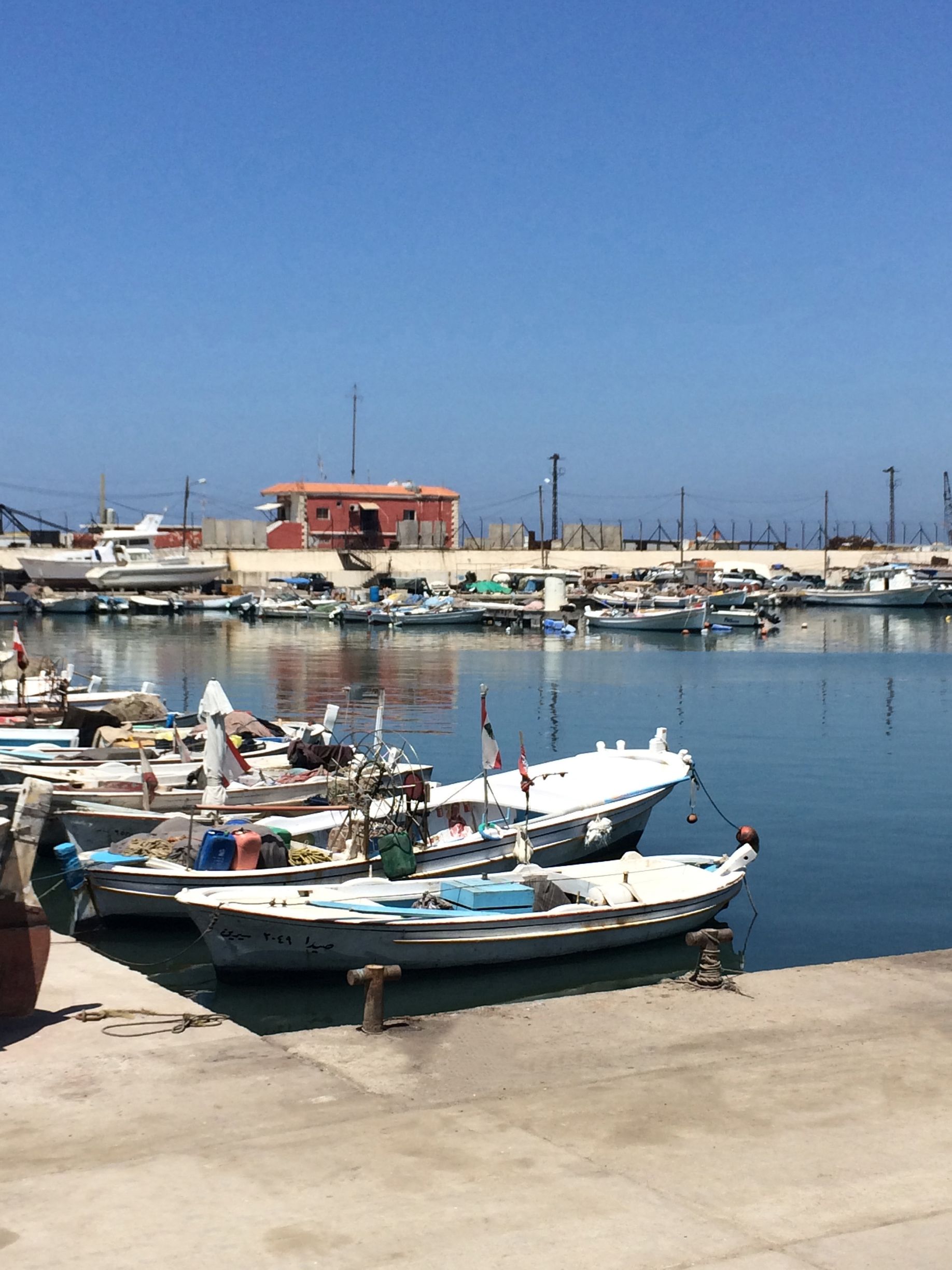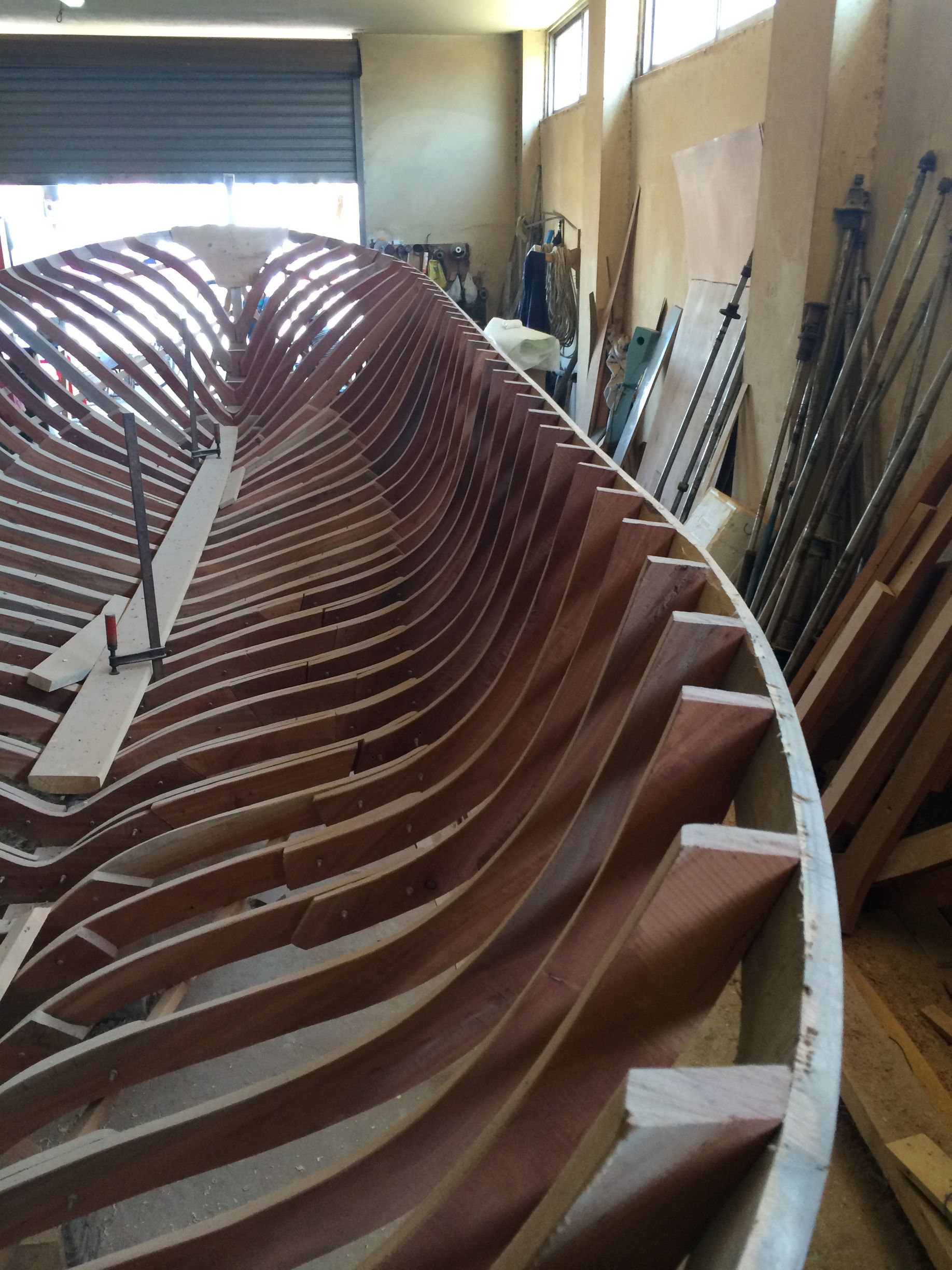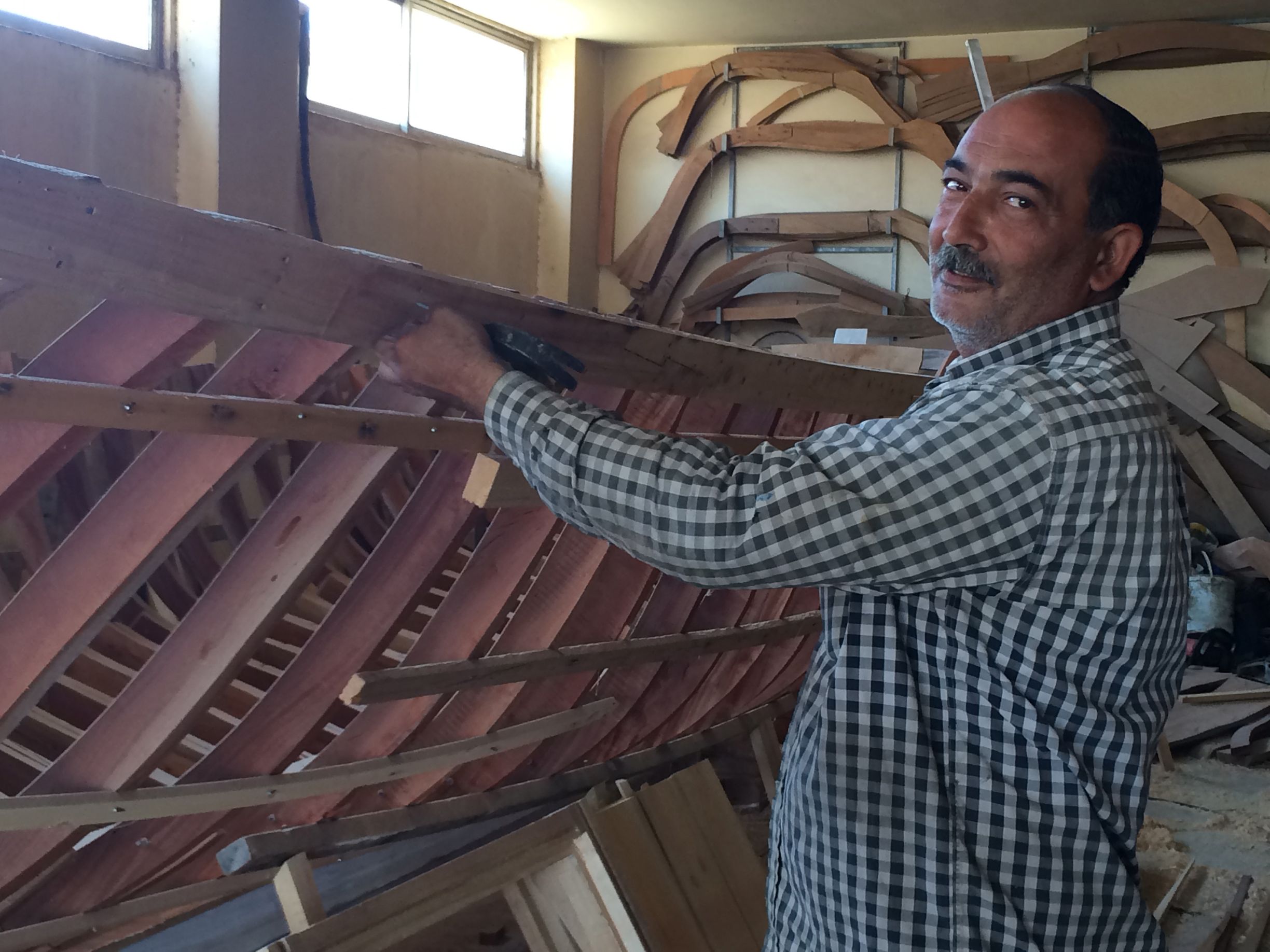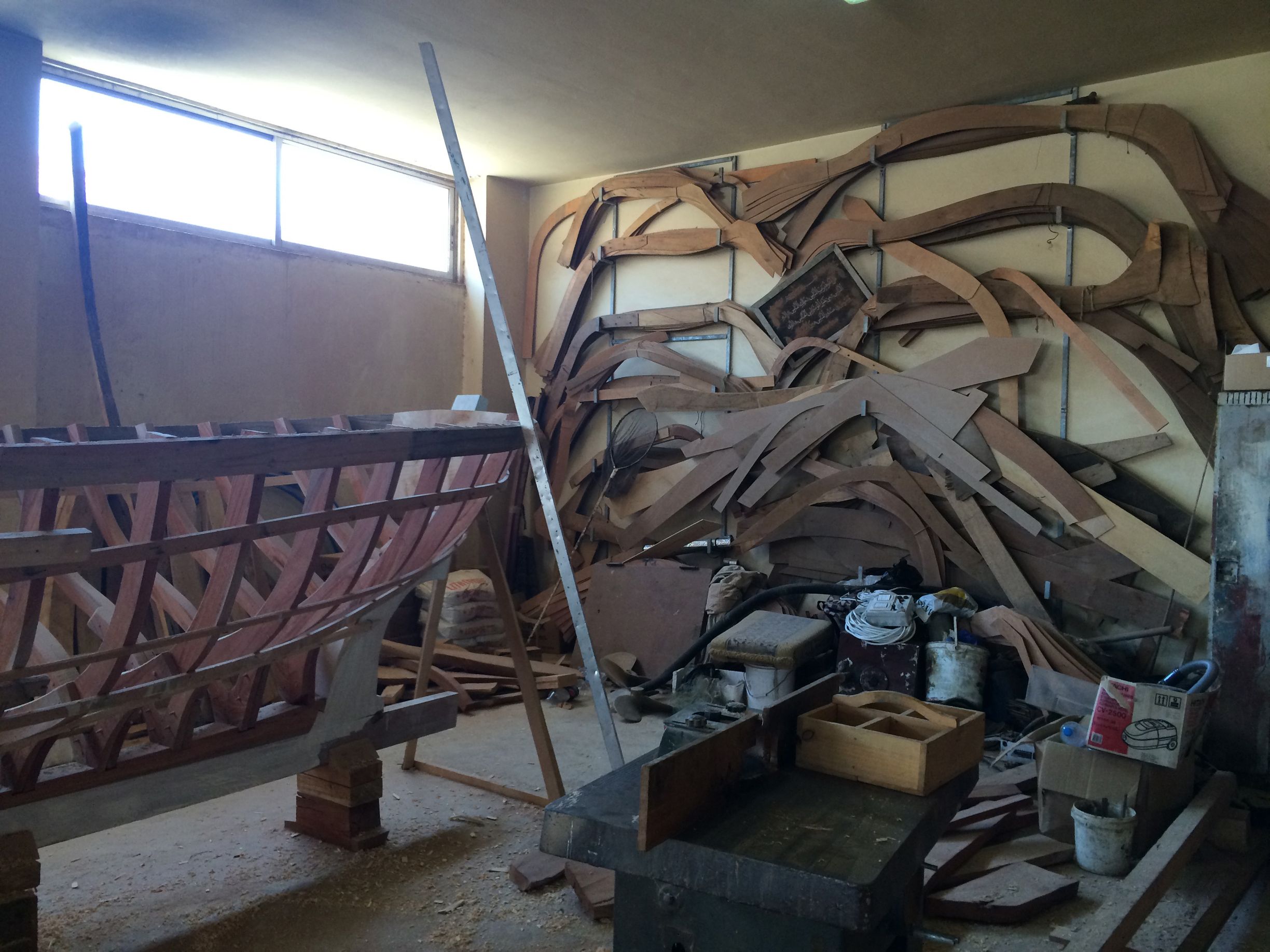Building boats for the fishermen in Lebanon, one modest workshop in the southern city of Saida continues the ancient traditional practice.
 The ancient port town of Saida has an emotional connection to fishing, with the trade passed down from one generation to the next over the years. Take a walk down the corniche on any day, under a bright blue sky, and the prevalence of fishing is clearly visible. Rows of fishing boats line the harbor after returning from their early morning adventures and fishermen sit along the seafront fixing tangled nets, their faces browned by life out at sea. An indoor fish market is a hive of activity, displaying the catch of the day from various sellers. The scent of fish, fresh or grilled, permeates the city.
The ancient port town of Saida has an emotional connection to fishing, with the trade passed down from one generation to the next over the years. Take a walk down the corniche on any day, under a bright blue sky, and the prevalence of fishing is clearly visible. Rows of fishing boats line the harbor after returning from their early morning adventures and fishermen sit along the seafront fixing tangled nets, their faces browned by life out at sea. An indoor fish market is a hive of activity, displaying the catch of the day from various sellers. The scent of fish, fresh or grilled, permeates the city.
Hidden out of public view on the edge of the harbor is Nasser Accad’s boat building workshop. In the center stands the skeleton of a boat in its early stage of production. Here, the smell of freshly-cut wood and sawdust overwhelms the scents of the ocean. The tradition of boat building in Lebanon stretches back centuries and though the techniques have changed the fishing boats themselves are still modest and simple. Accad, a tall man of few words, inherited the trade of boat building from his father, a Palestinian carpenter who used to work in Jaffa, Palestine, and Egypt but fled to Lebanon in 1948.
The tradition of boat building in Lebanon stretches back centuries and though the techniques have changed the fishing boats themselves are still modest and simple. Accad, a tall man of few words, inherited the trade of boat building from his father, a Palestinian carpenter who used to work in Jaffa, Palestine, and Egypt but fled to Lebanon in 1948.
For Accad boat building is the only life he’s known. His small team of carpenters includes his brother Webhe and his son Ahmed, who has worked with his father for years. Accad believes boat building is a labor of love. “I love everything about it. I go home at night after a day’s work and still think about it and how I can make it better,” he says. “I can’t not think about it. It’s my passion.”
 Accad moves towards the 9m long boat in progress and points to the spine, stretching from one end to the other. This curved piece of wood, named the brim, is always the first piece to be sculpted; this one is carved from three pieces of Keena wood, the most common in Lebanon. After the ribs of the boat are cut from a mold – of which many hang from the wall on one end of the warehouse – with a mechanical sawing machine and then connected to the brim with sturdy nails. This creates the core of the boat from which the other essential pieces of wood are added from the burden boards that line the inside of the boat to the stern that flows along the bottom. Once complete, this boat will carry four fishermen to sea and 10-20 kilograms of fish.
Accad moves towards the 9m long boat in progress and points to the spine, stretching from one end to the other. This curved piece of wood, named the brim, is always the first piece to be sculpted; this one is carved from three pieces of Keena wood, the most common in Lebanon. After the ribs of the boat are cut from a mold – of which many hang from the wall on one end of the warehouse – with a mechanical sawing machine and then connected to the brim with sturdy nails. This creates the core of the boat from which the other essential pieces of wood are added from the burden boards that line the inside of the boat to the stern that flows along the bottom. Once complete, this boat will carry four fishermen to sea and 10-20 kilograms of fish.
The boats are made for a harsh life at sea, durable against challenging weather with a lifespan of at least 20 years. “The wood’s lifespan is endless,” Accad says. “Even after 20 years it’s not the wood that is damaged but the nails that need replacing.”
 The boats, which vary in size, take around two months to build, so the small team can build around four to eight per year depending on demand, with each one being sold for around 8,000 USD. With boat building hubs limited to the towns of Saida, Tyre, Sarafand and Tripoli, Accad has built many of the fishing boats in this harbor and around the country.
The boats, which vary in size, take around two months to build, so the small team can build around four to eight per year depending on demand, with each one being sold for around 8,000 USD. With boat building hubs limited to the towns of Saida, Tyre, Sarafand and Tripoli, Accad has built many of the fishing boats in this harbor and around the country.
Though the elemental shape of these traditional fishing boats remains the same, models vary in their details with every port having a preference – in Tyre there’s a preference for smaller boats, in Beirut they prefer a roof.
 The profession of boat building has drastically changed over the years. “There’s been a revolution. As with cars, there are new shapes, new ways to build; it’s modernized,” Accad says. “My father would cut all the wood by hand; new technology has cut down the hours we spend working. My father would start his day at 6 am and now we start at 8 am.”
The profession of boat building has drastically changed over the years. “There’s been a revolution. As with cars, there are new shapes, new ways to build; it’s modernized,” Accad says. “My father would cut all the wood by hand; new technology has cut down the hours we spend working. My father would start his day at 6 am and now we start at 8 am.”
Here, the family of carpenters doesn’t only spend their life on land, their relationship with the sea is strong, and for pleasure they head out to sea to fish at 3 am on most days. For Accad, there is no other work he’d rather do. “If you don’t love what you do, you can’t do it,” he says.
Loading
